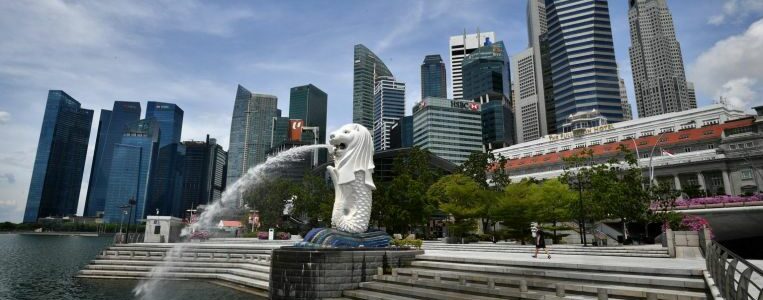
Singapore bonds' high real yields seen drawing buyers after sell-off
SINGAPORE (BLOOMBERG) – The underperformance of Singapore-dollar bonds is making way for buyers to return as the nation now offers the highest real yields among top-rated countries.
Singapore’s bonds were sold off in mid-February after the government announced plans to sell additional debt to finance infrastructure projects in the city state. The nation’s inflation-adjusted 10-year yield now offers a 62 basis points upside, compared to negative spreads for most other AAA-rated countries.
“The repricing has taken place, and at the end of the day, supply of Singapore dollar bonds will still be modest compared to most other countries,” said Irene Cheung, senior strategist at Australia & New Zealand Banking Group. She expects decent demand for the new bonds to fund infrastructure projects.
The new debt will be called Singapore Government Securities (Infrastructure) and the existing bonds will be renamed to SGS (Market Development), according to the Ministry of Finance and Monetary Authority of Singapore spokespersons. Except for the different use of proceeds, the two types of bonds are interchangeable from the perspective of investors, the authorities said.
While the added supply has jolted bond investors, analysts see long-term benefits of the infrastructure funding plan to outweigh the supply concerns. Singapore’s bond investors have been spared from a debt deluge facing other major markets as local authorities used reserves to fund coronavirus relief efforts. The city state has been selling bonds to invest proceeds and develop a yield curve rather than to plug a budget deficit.
“SGS (Infrastructure) will undoubtedly be a long-term positive for the development of Singapore’s bond market,” said Winson Phoon, head of fixed-income research at Maybank Kim Eng Securities. “Such an initiative can help add diversity, widen the investor base and perhaps enhance liquidity depth of Singapore bonds.”
The first SGS (Infrastructure) issuance is expected to start in the fourth quarter of this year and Phoon sees the first issuance of $2.7 billion coming in November.
SGS (Infrastructure) issuance would typically tilt toward the long-end of the yield curve to better match the useful life of the underlying infrastructure, the authorities said, adding that market development bonds can be shorter dated to manage overall duration.
Bond issuance with tenors of more than 10 years are rare in Singapore. The authorities offered 30-year debt in January and plan to auction 15-year and 20-year bonds in April and August, respectively.
“While increased bond supply is generally viewed as a negative signal, Singapore is proving to be different,” said Eugene Leow, a rates strategist at DBS Bank in Singapore. “The overall increase in SGS supply will be calibrated so I won’t be overly concerned,” Mr Leow said.
Singapore had a cyclically-adjusted budget deficit equivalent to 13.1 per cent of gross domestic product last year, according to estimates from the International Monetary Fund. This deficit is expected to fall to 1.7 per cent this year, which is narrower than some other AAA-rated countries.
“As proceeds of SGS (Infrastructure) will be spent, the overall fiscal position will become more relevant,” said Frances Cheung, a rates strategist at Oversea-Chinese Banking Corp. “Nevertheless, with the high credit rating and disciplined fiscal approach, that should not affect the overall investor sentiment.”
Join ST’s Telegram channel here and get the latest breaking news delivered to you.
Source: Read Full Article